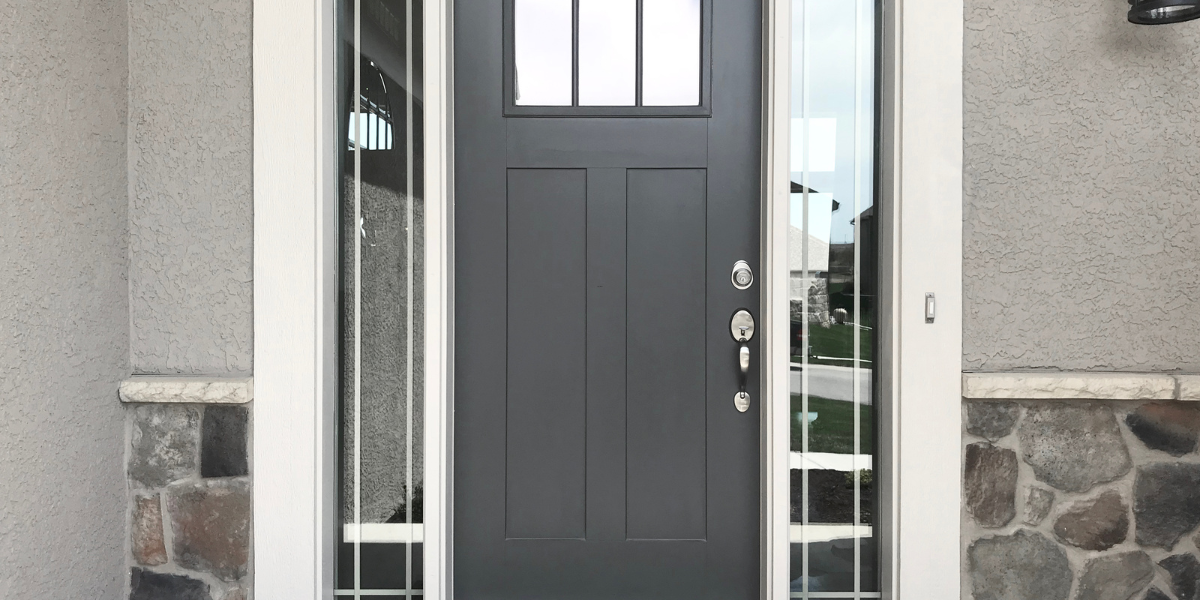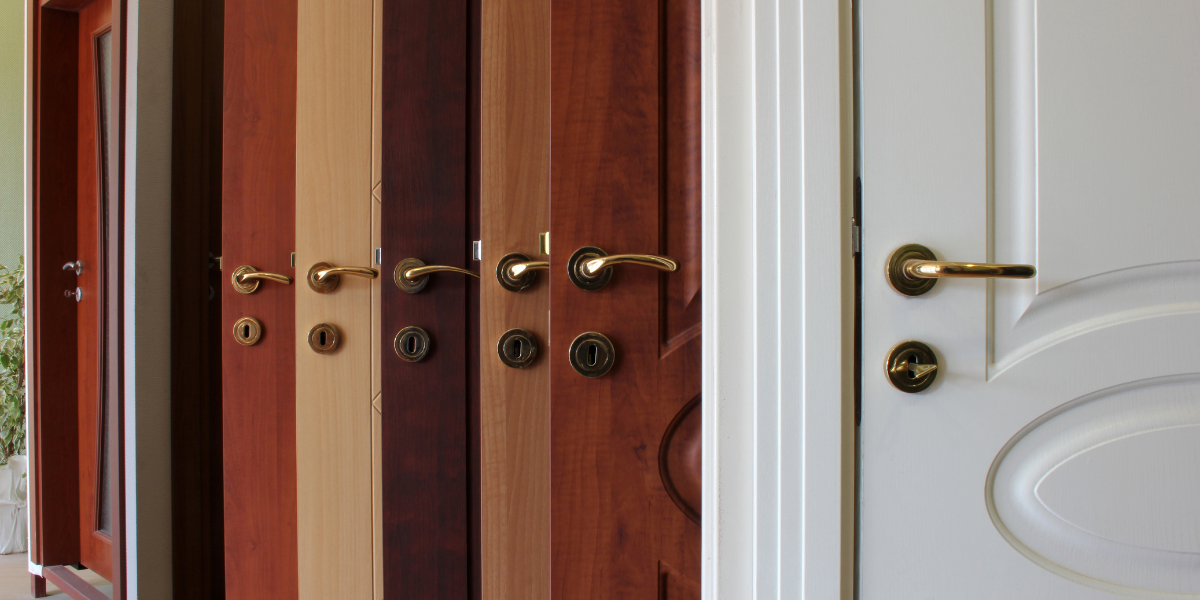I never thought I’d say this, but my door surprised me. Painting new UPVC doors felt foolproof, until my freshly painted white door turned patchy within weeks. Frustrated, I researched exactly what paint is best for a UPVC door. After testing primers, specialized spray paints, and proper preparation, the results stuck beautifully. Now, I know which paints suit UPVC best. In this guide, I’ll share everything you need to confidently refresh your entrance and make that crisp, professional finish last, without the headaches.
Understanding How to Protect and Beautify Your UPVC Door
Considering a fresh coat but unsure where to start? You’re not alone, UPVC doors need special care due to their smooth, non-porous finish. This 100-word section explores what this article covers, who it’s for, and why this matters:
- You’ll discover which paints work best, including door spray painting options.
- Homeowners, decorators, and landlords will learn professional techniques.
- You’ll walk away knowing why UPVC-specific prep and products save you time, money, and frustration.
We aim to help you choose the right method to refresh your door once and for years to come.
Why UPVC Doors Need Specialized Paint

UPVC doors resist rot, color fades, and warping, but that very smooth finish resists standard paint. When painted with the wrong product, the coat can peel in the sun and rain. Understanding this helps explain why you must choose paint tailored for plastics and specifically design your surface prep. By knowing these unique needs, you’ll avoid common pitfalls and ensure your door looks great over time.
Surface Texture Challenges
Because UPVC is non-porous and slick, most paints won’t stick unless specially formulated. Paint adhesion fails rapidly without proper bonding. Using the right primer or spray paint means your finish lasts, even under harsh weather conditions.
Top Paint Choices for UPVC Doors
Start by selecting a paint that bonds to plastic, resists UV light, and flexes slightly with temperature changes. Two top options include:
- Acrylic enamel: flexible and weather-resistant, ideal for outdoor use.
- Direct-to-plastic spray paint: easy to apply and made for adhesion on smooth surfaces.
Choosing the right paint prevents peeling and ensures a sleek, durable finish. Use either type carefully as part of a proper application system.
Features of Acrylic Enamel
Acrylic enamel allows flexibility with UPVC expansion and contraction. It stands up to knocks and weather without cracking. When top-coated properly, it maintains color and shines far longer than interior paints.
Benefits of Spray Paint
Specialized spray paints designed for plastics often need no primer. They deliver even coverage in thin layers, avoiding drips or streaks. This makes them ideal for DIY or small-scale refurbishing.
Prep, Primer, and Painting Technique
Proper prep makes or breaks your paint job. First, clean door surfaces well with mild detergent and water, removing dirt and grease. Second, lightly sand the door to create micro-roughness for better paint adhesion. Third, use a quality plastic primer before painting: it acts like glue between UPVC and topcoat. When applying paint, particularly with door spray painting, use thin, even coats, letting each dry before the next. Good technique prevents bubbling, cracking, and peeling. This structured process ensures your UPVC door looks fresh, and smooth, and stands up to seasonal weather with minimal upkeep.
Why Prep and Prime Matter
Skipping these steps leads to premature failure of the finish. Cleaning removes residues that block bonding. Sanding and priming create a strong base. Together, they anchor the paint for years.
Two Key Benefits of Door Spray Painting
Door spray painting offers unique advantages:
- Smooth, factory-quality finish: Spraying leaves no brush marks and ensures consistent surface texture.
- Speed and coverage: Large areas apply quickly, reducing repaint time and downtime.
Together, these benefits mean a high-end result without professional painting costs. For a cleaner, sharper look on UPVC doors, this method delivers both style and substance.
Smooth Finish Explanation
Sprayers create a fine mist that bonds well to UPVC’s surface, leaving an even finish free from strokes or drips. The result looks professionally applied and visually seamless.
Selecting the Right Color and Coat
UPVC doors come in various styles, white, woodgrain, or colored. Choose color and sheen carefully. Light shades minimize UV heating and backing; darker tones make the entrance stand out while hiding minor marks. Satin or semi-gloss finishes clean easily and resist dirt. Use UV-resistant formulas to prevent fading.
Finish Tips
Satin has a soft sheen that hides flaws yet cleans easily. Semi-gloss reflects more light and looks brighter, but shows imperfections. Both suit door spray painting well, giving vibrant, long-lasting aesthetics.
Conclusion
For UPVC doors, the best results come from using acrylic enamel or direct-to-plastic spray paint, paired with proper prep and priming. The right door spray painting technique ensures a durable, professional finish that handles expansion, weather, and wear. Invest in a good surface cleaning, light sanding, and a quality primer, then apply thin coats for even coverage. Skip these steps, and expect peeling or cracking in months. Whether you’re refreshing your front door or updating rental properties, this method guarantees a crisp, lasting result, making that bold entrance stand out now and long into the future.
FAQs
- Can I skip primer when door spray painting?
Skipping primer increases the risk of peeling, especially on older or glossy UPVC doors. Primer strengthens adhesion and creates a uniform base. It’s often essential for weather resistance and long-lasting results.
- Which paint sheen lasts longest on UPVC?
Semi-gloss and satin sheen both balance durability and cleanability. Satin hides imperfections best, while semi-gloss offers more shine. Both resist moisture, and dirt, and clean well, ideal for a front door.
- How many coats should I apply with spray paint?
Plan for two to three thin coats, allowing proper drying between applications. Thin layers dry faster and adhere better. They also help avoid runs, drips, or uneven texture on your UPVC door.
- Can I spray paint over existing woodgrain UPVC?
Yes, but prep thoroughly: clean, sand to remove texture, and apply plastic primer. Without sanding, the wood grain remains visible throughthe paint. Proper prep ensures a smooth, even finish.
- How long does a painted UPVC door last?
With cthe orrect paint, primer, and application, your UPVC door finish can last 5 to 10 years. Durability depends on weather exposure, paint quality, and maintenance. High-UV protection and flexible coatings boost lifespan.

